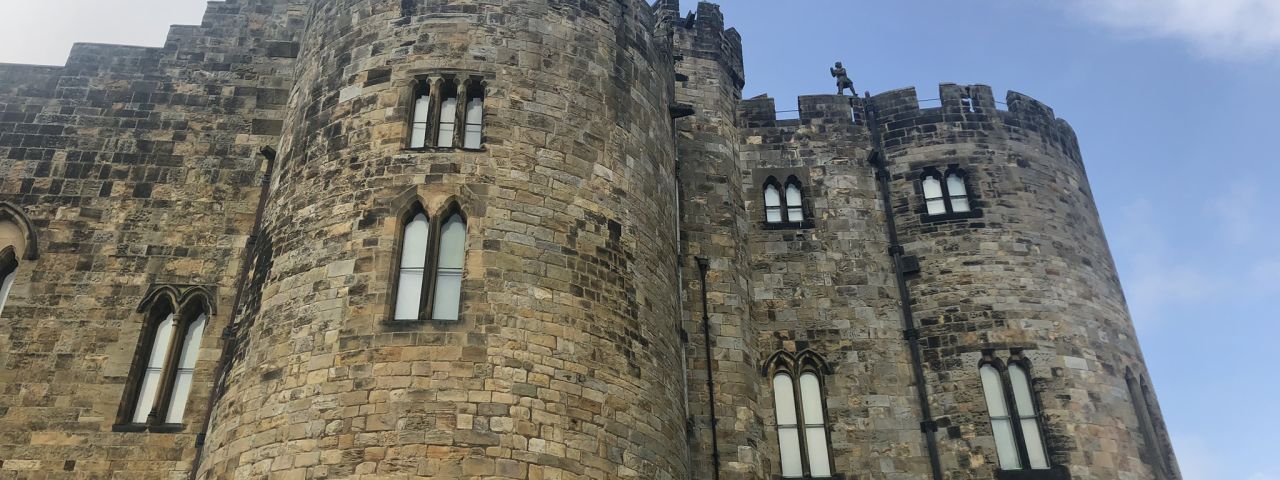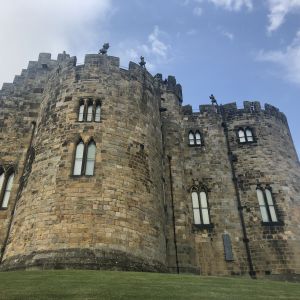Alnwick Castle
Sightseeing attraction | Alnwick | England | United Kingdom
Medieval castles in England
Alnwick Castle - A magnificent fortress with royal history and cinematic fame
Historic attractions in Northumberland
Alnwick Castle is one of the largest and most impressive castles in England. Located in Northumberland county, it has been the ancestral home of the Percy family, one of the most influential noble families in England, for over 700 years. With its rich history, magnificent architecture, and role as a famous film location, Alnwick Castle is one of the most significant landmarks in Britain.
Film locations for Harry Potter
Historical Background
The origins of Alnwick Castle date back to the late 11th century when the original castle was built by the Normans to secure the border with Scotland. In 1309, the Percy family acquired the fortress, and it has remained their ancestral home ever since. The Percys played a significant role in English politics for centuries and were involved in numerous historical events, including the Wars of the Roses and rebellions against the Tudor monarchy.
Architecture of Alnwick Castle
During the Hundred Years War and conflicts with Scotland, Alnwick Castle served as a strategically important defensive structure. In the 15th and 16th centuries, the castle was further expanded and transformed into a magnificent residence reflecting the wealth and influence of the Percys.
Gardens next to Alnwick Castle
During the English Civil War in the 17th century, Alnwick Castle was damaged, but in the 18th and 19th centuries, extensive restoration work was carried out, giving the castle its present appearance. The renovations were led by famous architects such as Robert Adam and Anthony Salvin, who transformed the castle into an imposing combination of medieval fortress and Victorian splendor.
Architecture and Interior Spaces
Alnwick Castle is one of the most impressive castles in England, combining medieval defensive architecture with ornate living areas from later periods. The massive walls, towers, and gatehouses recall its original function as a fortress, while the opulent interior spaces are a true masterpiece of Victorian and Georgian design.
Key architectural features include:
- The imposing main gate with its massive defensive towers.
- The outer walls and towers that once served to repel attacks.
- The great hall and state rooms adorned with gilded ceilings, intricate wood carvings, and impressive painting collections.
- The library, housing one of the most important private book collections in England.
The intricate ceiling paintings, 18th-century furniture, and historical artifacts make the interior spaces of Alnwick Castle a remarkable testament to aristocratic life in England.
Alnwick Castle as a Film Location
Alnwick Castle gained international fame as a filming location for numerous movies and TV series. It became particularly famous as the backdrop for Hogwarts in the first two Harry Potter films. The courtyards and some rooms of the castle were used for various scenes, including the famous flying lessons on broomsticks.
In addition to Harry Potter, the castle has also appeared in films like Robin Hood: Prince of Thieves and the TV series Downton Abbey. This cinematic significance has made Alnwick Castle a popular destination for fans of pop culture.
The Gardens of Alnwick
Adjacent to the castle are the spectacular Alnwick Gardens, which have been completely renovated in recent decades. The garden complex includes:
- The famous Poison Garden, where some of the world's most dangerous plants grow.
- The grand waterfall, offering one of the largest water features in Europe.
- The Rose Garden and various themed gardens that are in full bloom throughout the year.
The gardens complement the impressive castle and make Alnwick a place of interest for historians and nature lovers alike.
Significance for the Region
Alnwick Castle is not only a historical landmark but also a cultural hub in Northumberland. It is still inhabited by the Percy family and serves as a venue for events, exhibitions, and festivals. The castle and the adjacent gardens are an important economic factor for the region, attracting numerous visitors every year.






























































































































































